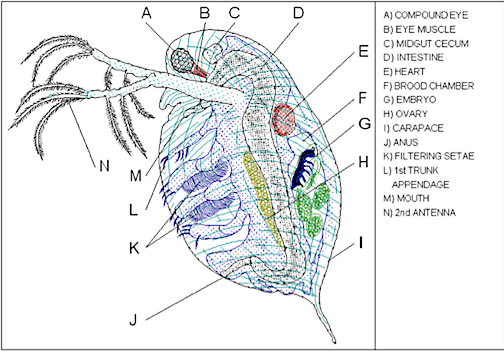Your first look at arthropods ended with a discussion as to the pros and cons of possessing an exoskeleton. But crucial to uderstanding the full ramifications of having an exoskeleton was to understand the constrainsts of such on appendages. Our in class arthropod lab focussed on how arthropods use their appendages. To try to re-create these experience you will need to view some films we typically examine in lecture.
What is a foot? Think you know, watch this film. -----http://shapeoflife.org/video/other-topics/arthropod-locomotion-engineering -
Looking for distributed feet, hybrid feet, etc. try to determine how some of the animals you would work with in our labs solve the problem of moving through their world.
Your teaching assistant provided this film of pill bug movement. Can you see any alternaturnation of legs.
Sowbug movement.
Millipedes have several legs. Using these youtube made at high speed and then slowed down movies, contrast millipede movement with that of the pillbug. Are sides alternated? What is an distributed foot or in other words, are the legs of several segments used to make a distribute foot? How many?
https://www.youtube.com/watch?v=KKkouwsJ-9s
https://www.youtube.com/watch?v=xysbNbvUDZA
You already learned that insects tend to use a tripod motion, but there is more engineering involved as the forces exerted by different legs are not alike. https://www.youtube.com/watch?v=24P0NzJdBig
And those that walk on water use this unequal distribution of force to "swim" across the water.
https://www.youtube.com/watch?v=E2unnSK7WTE
And here a cricket that puts it all together, relying on the bendability of the exoskeleton as well as a distributed foot to "jump" across the water.
https://www.youtube.com/watch?v=yEeXGg8n_FI
We keep a colony of Daphnia, a small crustacean in the laboratory. These is commonfood item for most fresh water fish and invertebrates and used in many ecological experiments. They will develp for example haemoglobin in low oxygen environemnts.
How do daphnia locomote? You may be surprised to note that "feet' do not seem to be involved at all.
View this youtube movie and then link to a video made by your teaching assistant to show the appendages close up that used as "feet" in these animals.
https://www.youtube.com/watch?v=3rOCjjD29SY
Dapnia under the microscope.
